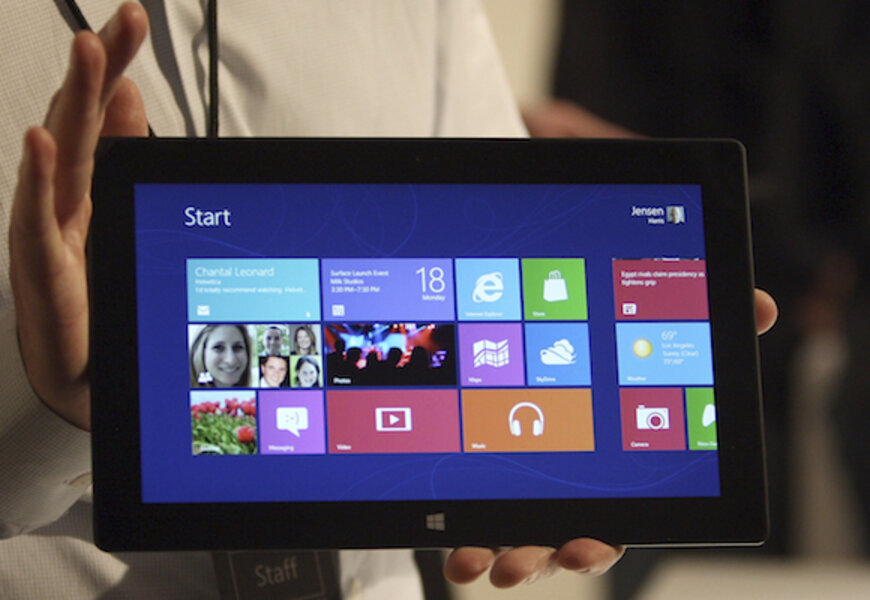Microsoft Surface: Good marks for the tablet, but how about that software?
Loading...
After a few months of hype, Microsoft will finally begin selling its Surface tablet tomorrow. The device, which runs the Windows RT operating system, starts at $499 – the same price as the Apple iPad. (To get the patented Touch Cover keyboard, you'll have to fork over an extra hundred bucks.) Microsoft had previously said that pre-order demand was high in the US; in the UK, meanwhile, the base-level Surface appeared to have sold out.
So hey, how does the Surface stack up to competitors such as the Apple iPad and Amazon Kindle Fire?
Well, reviews started to trickle out today, and the consensus seems to be this: The Surface is a good looking and snappy machine, burdened with a less than stellar OS. Over at The New York Times, for instance, David Pogue praises the lines on Microsoft's new tablet.
"The edges of the black magnesium body are angled and crisp, like a prop from a Batman movie. Then there’s the kickstand. The lower half of the back is a hinged panel, held shut magnetically until you pop it out with a fingernail. It snaps to a 22-degree angle, ready to prop the tablet sturdily upright," Pogue writes. "A lesser kickstand would add weight, bulk or ugliness. But this one is razor-thin and disappears completely when you’re not using it."
Still, Pogue warns, the software on the Surface is "heartbreaking." As Pogue points out, the Surface isn't running Windows 8. It's running Windows RT.
And Windows RT, "is not the full Windows," he continues. "The Surface comes with preview 2013 versions of Word, Excel and PowerPoint – workable, but sometimes sluggish. Otherwise, though, Windows RT can’t run any of the four million regular Windows programs. Or the 275,000 iPad apps. Or the 17 Android tablet apps. (That’s a joke! There are actually 19 Android tablet apps.) Instead, it requires all new apps."
Zach Epstein of BGR has titled his review of the Surface "a tale of two tablets." The Surface, he writes, "really is the perfect combination of a tablet and a notebook thanks to the Touch Cover and the Type Cover, and I felt right at home with the Surface the moment I turned it on. On the other hand, the software experience does not feel like home. It’s new, and for many it will be scary."
Moreover, he adds, "Windows RT has a lot of growing to do. The faster Microsoft can get developers on board, the better – and the early days will be slow-going in some respects as a result of this lack of apps."
We'll give the last word here to Eric Franklin of CNET, who – surprise! – finds the Surface to be well-built and solid, and a pleasure to look at. But he calls the Windows Store a "ghost town" and says the tiled interface will likely befuddle many users.
"If you're an early adopter willing to forget everything you know about navigating a computer, the Surface tablet could replace your laptop. Everyone else: wait for more apps," Franklin writes.
Thinking about picking up a Surface? Drop us a line in the comments section. And for more tech news, follow us on Twitter @venturenaut.







